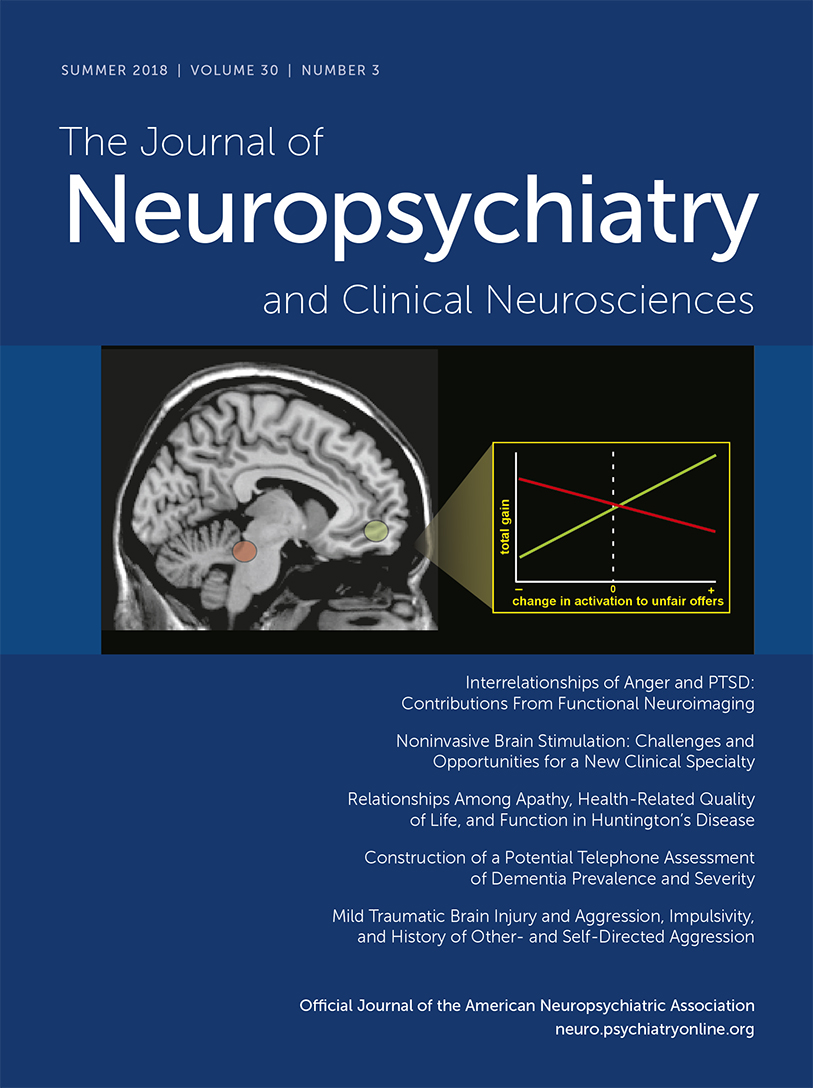Pseudobulbar Affect Correlates With Mood Symptoms in Parkinsonian Disorders but Not Amyotrophic Lateral Sclerosis
Abstract
Pseudobulbar affect (PBA) is a syndrome of affective disturbance associated with inappropriate laughter and crying, independent of mood. PBA is common in amyotrophic lateral sclerosis (ALS) and increasingly recognized in Parkinson’s disease (PD) and atypical parkinsonism (aP). Correlates of PBA have not been systematically studied. The purpose of this study was to determine whether cognitive and psychiatric comorbidities correlated with patient-reported symptoms of PBA by using the Center for Neurological Study–Lability Scale among patients with ALS, PD, and aP. A total of 108 patients (PD, N=53; aP, N=29; ALS, N=26) completed a cognitive screener and self-reported measures of lability, depression, anxiety, apathy, and quality of life. Statistical analyses included one- and two-way analyses of covariance to evaluate group differences, Pearson’s correlations to determine relationships between PBA symptoms and comorbidities, multiple regression for predicting PBA symptom severity in clinical correlates, and chi-square t tests for predicting demographic variables. PBA symptom severity did not vary between the three groups. Younger age and worse anxiety correlated with PBA symptom severity in all three groups, whereas depression and poor mental health/quality of life only correlated with PBA symptom severity in the PD and aP groups. PD and aP patients may be more likely to benefit from treatment with antidepressants. Increased PBA symptoms were associated with declines in cognitive functioning in the aP group, but sufficient numbers of PD and ALS patients with cognitive dysfunction may not have been recruited. The results suggest the possibility of an alternate pathophysiologic mechanism for PBA, which may vary between neurological disorders and disease progression. Mood and cognition are of particular relevance and should be evaluated when symptoms of PBA are suspected.



